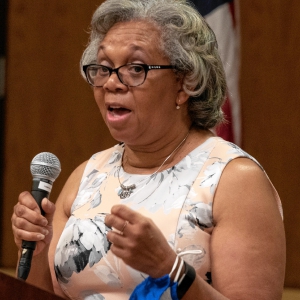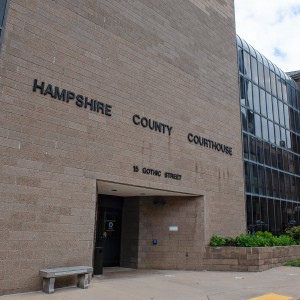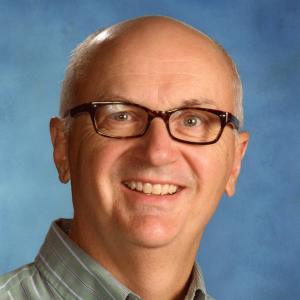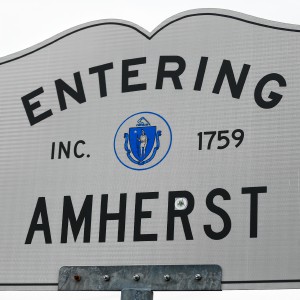Non-binary pronouns a growing part of gender identity
| Published: 07-31-2016 2:55 PM |
In coming out to dozens of co-workers at a buttoned-up health research office, Aubri Drake had to start from the beginning.
“When you’re born, when you pop out, the doctor takes a quick look between your legs and says ‘It’s a boy,’ or ‘It’s a girl,’” Drake began.
As Drake’s colleagues listened, Drake explained that most people go through life with an identity that matches that first peek at their genitals. But not everyone. For them, that identity isn’t something that can be boiled down to the labels “male” or “female” or the corresponding pronouns “he” or “she.”
“I’m telling you this because I am trans, I’m genderqueer,” Drake told the co-workers. “I don’t identify as a man or a woman.”
Drake, 29, of Easthampton — where trans protections were recently affirmed — is one of many people in the Valley and across the country whose gender identity goes beyond the male/female binary to something more complex. And they say that, often, that realization brings a need for a shift in language.
The traditional gender-based pronouns — she/her or he/him — no longer work. Drake uses they/them.
People who don’t identify as either male or female use different terms to describe themselves, including non-binary, genderqueer, genderfluid, bigender and agender. Some, but not all, also identify as transgender.
For Drake and others who identify outside the male/female binary, the facts of gender identity and pronouns are something as integral as their first name.
“If I see somebody and I’m describing them to somebody else, I do not assume gender,” Drake said.
Article continues after...
Yesterday's Most Read Articles
 Holyoke man finds bear paw in his yard
Holyoke man finds bear paw in his yard
 Petition to block auto dealership on King Street falters in Northampton
Petition to block auto dealership on King Street falters in Northampton
 First look at how little Amherst’s police alternative being used called troubling
First look at how little Amherst’s police alternative being used called troubling
 Developer lands $400K loan for affordable housing project in Easthampton mill district
Developer lands $400K loan for affordable housing project in Easthampton mill district
 Developer pitches new commercial building on Route 9 in Hadley
Developer pitches new commercial building on Route 9 in Hadley
 Boyfriend accused in slaying of Hampden sheriff’s assistant, former legislator’s top aide
Boyfriend accused in slaying of Hampden sheriff’s assistant, former legislator’s top aide
While the spotlight on transgender celebrities such as Laverne Cox and Caitlyn Jenner has helped illuminate the fact that gender is not always black and white, and the experiences of those who identify outside of a gender binary are largely missing from the cultural consciousness, say Drake and others. Cox and Jenner were both identified as male at birth and now identify as women and use she/her pronouns.
However, many transgender people don’t identify as male or female. Genny Beemyn, who works at the University of Massachusetts Amherst, said that is especially true among younger people, including at UMass.
“One thing that we’re seeing here and what other schools across the country are seeing is the majority of our trans students today identify as nonbinary,” Beemyn said.
At UMass freshman orientation, incoming students can choose one or more of the following identifiers: man, woman, trans or another identity. Two-thirds of students last year who were not just men or women identified themselves as nonbinary, according to Beemyn.
Beemyn is the director of the Stonewall Center, the UMass LGBTQ resource hub, and also identifies as nonbinary and uses they/them pronouns. They said that universities, including UMass, are beginning to recognize the importance of allowing students to officially self-identify outside the binary.
For example, students applying for admission to UMass for the fall 2017 semester will for the first time have the option to identify a gender other than male or female in their applications, Beemyn said.
Being forced to choose from male or female or being referred to by the wrong pronouns often leaves those who identify outside the binary feeling boxed in.
“When you use he/him pronouns or she/her pronouns for me, you are erasing who I am,’ Drake said. “You’re seeing what you want to see, you’re seeing what you imagine I am supposed to be.”
Facebook in 2014 began allowing users to pick from a list of 58 genders and has since replaced that expanded list with a fill-in box. And popular dating site OkCupid offers 22 gender options including genderqueer, pangender, transfeminine, two spirit and Hijra.
There’s no widespread government recognition of nonbinary genders in the United States. But in a ruling believed to be the first of its kind, an Oregon judge in June ruled that resident Jamie Shupe can have their sex listed as nonbinary in official documents.
In the United Kingdom, several government agencies recognize the use of “Mx.” as a gender neutral alternative to “Mr.” “Mrs.” “Miss” or “Ms.” In Australia, gender can be listed on passports as male, female or “X.”
The use of they/them to identify a single person, rather than two or more people, has not been without controversy.
Maryland state education official Andy Smarick made headlines earlier this month after sharing his thoughts via Twitter on Merriam-Webster Dictionary’s use of the singular “they” when referring to one of the dictionary’s staffers.
“The singular they is an affront to grammar. Language rules are all that separates us from animals. We. Must. Stand. Firm,” Smarick wrote in a tweet that has since been deleted.
The dictionary retorted in a tweet: “Then you’re talking to the wrong dictionary — we’re descriptivists. We follow language, language doesn’t follow us.”
To students of language, it’s a battle of descriptivism — analyzing and documenting the real-world use of language — versus prescriptivism — the idea that one manner of language use or set of rules is better than another.
For Northampton grammarian Lisa Papademetriou, the rules of language should not supersede actual usage.
“The study of grammar and language is really just an attempt to map the fluid river that is our living language. Like any river, new channels will be cut, banks will erode, dams will be built, dams will burst — it’s dynamic,” she said. “You do not change the river in order to match the map. You change the map in order to map the river.”
Papademetriou is the author of more than a dozen books, a former book editor and most recently the person behind humorous grammar website IvanaCorrectya.com.
She said her work as Ivana has led her to think and study more about grammar and the way it’s used by different communities. She likes the singular they, both when used to refer to someone who identifies outside the gender binary and to refer to someone whose gender is unknown. The latter is a use that’s been commonplace for centuries.
“If I say ‘I went to the doctor today and I got some important news,’ many people would respond ‘What did they say?’ because I haven’t specified the gender of the doctor — it’s ambiguous gender,” she said.
The Oxford English Dictionary, which bills itself as “the definitive record of the English language,” offers a definition of “they” as referring to a “singular noun or pronoun of undetermined gender: he or she.” The dictionary notes, however, that this use is sometimes considered erroneous.
The first use recorded by the dictionary is a circa 1375 Middle English translation of the French poem “William of Palerne.”
And Shakespeare used the singular they in A Comedy of Errors: “There’s not a man I meet but doth salute me / As if I were their well-acquainted friend.”
Today, “they” isn’t the only pronoun option for those who identify outside the gender binary.
Emmett Wald, 22, of Northampton, initially used they/them after first coming out as genderqueer while a student at Smith College in 2012. But that changed the following year.
“At some point during the fall semester, a friend asked me about my pronouns, I was like ‘Oh, you know, anything gender-neutral, whatever’s easiest for you,’” Wald said. The friend responded: “O.K., but what pronouns do you actually prefer?”
“I don’t actually know, because nobody’s ever asked me that,” Wald recalled.
Wald settled on ey/em — a pronoun set that comes from the ends of the words “they” and “them.”
“Now when I introduce my pronouns, I usually say ‘ey/em, or anything else gender-neutral,’” ey said.
In their recent research regarding nonbinary college students, Beemyn said they observed the use of a variety of pronouns, though about 90 percent of those interviewed used they/them.
Other pronouns include ze/hir and per, which is derived from “person.”
Those who identify outside the binary see gender everywhere — because it is.
“We use gender in so many places without thinking about it and we do it based on our quick assessment of someone’s gender,” Drake said. “Even simple interactions like going to a cashier to check out — ‘Hello ma’am, how are you today?’ ‘Hello sir, how are you today?’”
The use of specific words attached to gender in social interactions is largely unique compared to the way one addresses other perceived cultural differences. In presentations to higher education faculty and staff, Beemyn drives home this point.
“The example that I give is if you’re in a large classroom teaching, you would never call on someone saying, ‘The Asian person in the back there,’” they said. “But we feel perfectly OK saying ‘That woman in the back there.’”
Though people might silently assume another person’s race based on that person’s appearance, it’s considered offensive to make that assumption known, Beemyn said.
“With gender, we make those assumptions very apparent by using ‘woman’ or ‘man,’ ‘Mr.’ or ‘Ms.,’ ‘sir’ or ‘madam,’ or ‘he’ or ‘she,’” they said. “It’s not any more polite than to single someone out by race or to name someone’s race without really knowing what their race actually is.”
The gender assumption and resulting politics at Smith College was something Wald frequently encountered.
As ey was getting emails referring to “Smith women” and hearing about notable “alumnae,” Wald remembered a much more personal confrontation.
“A classmate was speaking to me and a few other people after class and she said ‘Bye ladies!’ and I was like, ‘Actually, by the way, I don’t identify as a lady and I would prefer if you used a more gender-neutral term,’” ey said. “She looked at my long hair and she looked at my long skirt and she said ‘OK’ in a really skeptical tone of voice.”
Wald cut eir hair shortly after that experience.
“I just become acutely aware that when I wore a skirt, people made assumptions that I was female, that I was a woman, and I wasn’t comfortable with that,” ey said. “That was a really complicated process for a while, feeling like gender-neutral meant masculinity for me and trying to push as far as I could in that direction.”
Vivian Chace, 22, who identifies as nonbinary, said they struggle when other people fail to recognize Chace as such.
“I really like rompers and overalls and I wear a lot of skinny jeans with floral-patterned shirts with makeup and it’s very often that people will be like ‘That’s a guy with makeup on,’ or ‘That guy might be gay,’” they said. “That’s not really how I want to be read. That requires wearing a dress, and makeup and a pin that says ‘they.’ It always takes that extra level of push to be read in that way, which is frustrating.”
In college, Chace said their friends were supportive about using they/them pronouns. At work, Chace had varying levels of success with that recognition — and varying levels of comfort about coming out.
There was the Nordstrom store in Connecticut, where co-workers who were generally middle-aged white men “treated it as this thing they didn’t want to deal with,” Chace said. “They still used the proper pronouns.”
But Chace said their identity was also rejected by colleagues in the politically radical San Francisco Mime Troupe.
“I thought for sure, no doubt, a self-identified communist theater troupe in the United States that’s nine blocks away from the Castro District would get pronouns right and make an effort,” they said. “In fact, it was very much the opposite — ‘Why do you care about this so much, you’re just gay.’”
Drake has struggled to find a full embrace of their identity at work, leading Drake to accept co-workers who use “he/him” rather than “they/them.” But the pronouns that are not OK, Drake said, are “she/her.”
“They cannot seem to forget that once upon a time, they thought I was a girl,” Drake said. “I’ve gotten most people to use the right pronouns at work — right in the sense of not using she/her.”
People who identify outside the binary and their allies say that discussion about pronouns should be more commonplace.
“My name is Aubri and I use they/them pronouns, what pronouns do you use?” Drake said. “It should be part of social interaction.”
Beemyn said education is key. In their presentations to higher education faculty and staff, Beemyn advocates for not assuming that everyone identifies within a gender binary, suggesting that professors give students the option of introducing their pronouns to the class.
Beemyn recently highlighted this concept to incoming first-year students at orientation.
“We introduce ourselves with the pronouns we use and explain why that’s done,” they said. “Literally from the day that students step on campus for the first time, we want them to know about nonbinary pronouns and that we are not going to assume their pronouns.”
Editor’s note: In this article, the Gazette has used the pronouns chosen by the people interviewed.
Chris Lindahl can be reached at clindahl@gazettenet.com.

 Holyoke man gets 5 years for assault, drug charges
Holyoke man gets 5 years for assault, drug charges Shelter money fading, but ‘not at the end of the line’
Shelter money fading, but ‘not at the end of the line’ A Look Back: April 19
A Look Back: April 19 Sinkhole closes Eastman Lane in Amherst
Sinkhole closes Eastman Lane in Amherst 
